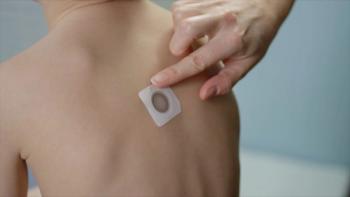
Wesley Kufel, PharmD, discusses doxycycline for post-exposure prevention of Lyme disease in young children
The American Academy of Pediatrics updates guidelines, allowing doxycycline use in young children for tick-borne infections, enhancing treatment options.
Although it is fall, people can still be vulnerable to tick-borne illnesses such as Lyme disease. Adult ticks, are most active from March to mid-May and from mid-August to November. Both nymphs and adults can transmit Lyme disease. Ticks can be active any time the temperature is above freezing.1
Young children can be especially vulnerable spending hours in grassy and wooded areas. Interestingly, there was a 2018 American Academy of Pediatrics update recommending a single-dose doxycycline post-exposure prophylaxis (PEP) for up to 21 days in children under 8 for Lyme disease prevention.
“This was a big change in recommendations, because as infectious disease clinicians, we're always told you cannot use doxycycline in children. So this was a really nice update, and it's pretty much based on a lot of tick-borne infections where there really are no other great or good alternative options for doxycycline,” said Wesley Kufel, PharmD, BCPS, BCIDP, FCCP, FIDSA clinical associate professor, Pharmacy Practice, Binghamton University State University of New York.
He says there has been a lot of data based from these and should help clinicians become more comfortable with prescribing this antibiotic to this population, which is a departure from previous recommendations. In particular, he notes a New England Journal of Medicine study that showed an 87% efficacy of this PEP treatment for Lyme disease prevention.2
Even with a clinical update that is now 7 years old, Kufel says many clinicians remain unaware of it. He spoke at the recent IDWeek conference on this topic, looking to increase awareness.
“I think that as an infectious disease community, we need to continue to increase education that we can go ahead and do doxycycline post-exposure prophylaxis in children less than 8. And I think over time, we'll start to see more utilization in children,” he said.
Disclosure: Kufel reports no relevant disclosures.
References
- Be Tick Free—A Guide for Preventing Lyme Disease. NY Department of Health. Accessed November 6, 2025.
https://www.health.ny.gov/publications/2825 - Zhou G, Xu X, Zhang Y, et al. Antibiotic prophylaxis for prevention against Lyme disease following tick bite: an updated systematic review and meta-analysis. BMC Infect Dis. 2021;21(1):1141. Published 2021 Nov 8. doi:10.1186/s12879-021-06837-7
Newsletter
Access practical, evidence-based guidance to support better care for our youngest patients. Join our email list for the latest clinical updates.






